-
Senior Member
registered user
Try ping first with an explicit, known IP, like ping 72.36.188.40 and if that works, with a name, like ping www.knoppix.net (147 ms response time from here) or ping google.com. (116 ms). If IP ping works, but name ping doesn't , you could try with an explicit name server IP. As root, you may try the command
Code:
echo 'nameserver 193.212.1.10' >> /etc/resolv.conf
(Don't know if that particular IP still belongs to a nameserver, you must check out some local ones and substitute the IP address.) Try with both DSL and Knoppix.
If that doesn't work, my advice is to check out people connecting successfully with Linux to your ISP.
-
Junior Member
registered user
Inability to connect to the Internet
Sorry for delay in replying, but the computer is not the centre of my life, just part of it, and currently we have a typhoon affecting us here and having a boat computers are not THE priority.
Now "PING".
It does not work.
Using the formats suggested I get answers such as " unknown host", which I think indicates that there is no Internet connection, or recommendations as to how to use Ping. In other words I am using the wrong format. Not knowing the correct format, I can't try to do it correctly. I have followed the instructions that you gave in detail, but it does not seem to work.
Using "ifconfig" again I get the following answers:
erth1: Up broadcast running multicast. MTU 1500 Metric 1
Rx Packets 55 (all other headings are zero)
Tx Packets 59 (again all other headings are zero)
Rx Bytes 3580
Tx Bytes 4784
Interrupt 18
IO: Uplink running MTU 16436
Rx Packets 8 (all other headings zero)
Tx Packets 8 (again all other headings zero)
Rx Bytes 400 Tx Bytes 400
In reply to the qusetion on "Access concentrator", yes, this comes up and finds my "erth1" OK
I have also looked around for some other approach that would fit my requirements, and nothing appears to fit. Almost all relate to "dialups" that I don't need, or to entering addresses that again I don't need, at least in XP I don't. All I do there, as I have said before, is to enter my ID and password under the broadband setting in "networks".
I have now tried Knoppix, Xandros, and DSL(Damn Small Linux), and with all of them I am unable to connect to the Internet. They all seem to view access to the Internet as requiring a "dialup", that I don't need.
I think that It is time to forget attempting to get connected with Linux in any form, and revert to the devil I know, even with all it's faults.
Perhaps given some time Linux distributions will catch up with developments and make it easier for those of us who don't want to become computer boffins to use the Internet. I have been trying now for 2 years on and off to get into Linux, first with a wireless broadband network from the Yacht Club to my boat, and now ashore in a new house with cable TV and Broadband Internet, all with no success. I have been told that Linux is more stable than Windows and more secure, but if one cannot get connected what is the point.
One thing that has been of success during my attempts to use Linux, is that I discovered the browser FireFox that I now use in Windows XP. This browser I am really hooked on. It is excellent.
Thanks to those that have tried to assist me. Failing some sort of miracle advise, this I think is the END. Thank you all
-
Come on people!
I have the same problem here...
Haven't you ever heard that some cable providers ask for username and pasword?
None of the tools provided with knopp ask for username or password, but try automatically to log in?
Is there any solution?
I simply have to enter ip address of the eth, user/pass and voila!
-
Administrator
Site Admin-

Originally Posted by
interceptor
Is there any solution?
Yes, there is a very simple solution. While I've actually never heard of any cable company that requires a login, the answer is what I've long been saying in these forums and in answer #4, anyone with a high speed connection should be using a router for a number of reasons. It's not the most important reason, but a router that works with your cable system will resolve this problem for you, when you boot Linux (or any other OS with an IP stack that does nomal DHCP discovery), you'll be on the Internet as soon as you boot.
-
Junior Member
registered user
Inability to connect to the Internet
Thank you for continuing this thread, but I did indicate that there was no need to continue from my point of view as there does not appear to be an easy answer, although it is true that I would like to overcome this connection snag.
In reply to Harry, yes, BUT................... why should one need to go to the expense of buying a router, when with Windows XP it is not needed ?
There must be a simpler answer.
Subject to correction, I believe that my IP, Netvigator.com(part of PCCW) here in Hong Kong, uses a new method of providing TV via cable, that, now I'm on shaky ground, uses a modified system of streaming TV not used in the past. They are very tight lipped about the technical details. However, for a computer broadband connection, there is no dialing required and addresses are obtained automatically. All one does, as I have stated before, is under XP, is to go to "Network connections", and under "broadband" using PPPoE, enter my ID and password, and 'voila' I'm in, all connected.
Firewalls I have separate from the one Windows provide, antivirus and spy-ware programmes I also have independent of Microsoft. And so far, in 7 months of being 'connected' I have not had any virus or spy-ware problems or unwanted visitors.
Now coming back to Linux, ALL the connecting software that I have seen so far, is designed for 'dial-up' systems, that here in my case, is not needed.
.
-
Administrator
Site Admin-
Re: Inability to connect to the Internet

Originally Posted by
johnbb
In reply to Harry, yes, BUT................... why should one need to go to the expense of buying a router, when with Windows XP it is not needed ?
Well, there are several answers to that. In spite of your belief that you have not been infected, there is plenty of evidence that most systems not behind a hardware firewall will be exploited within minutes of being put onto a high speed connection. Using software firewalls and scanners from more trusted sources than Microsoft is a good idea, but software firewalls can't protect against everything; by the time the information gets to the software firewall it has to go through the IP stack, and any exploit that causes a buffer overflow there will allow the exploit to take control in spite of the firewall (and we all should know about Microsoft and buffer overflows). I use software firewalls, but would never run on a high speed connection without a hardware firewall such as provided by a NAT router. And I'm frugal, but this is not an area that is worth trying to save a few bucks on.
So I reject your statement that the router is not needed with XP. You apparently can get the connection to work on Xp without a router, but that far from saying it's not needed; that would be like saying that backups or passwords are not needed either, or that the locks on your card door and ignition are not needed.
OK, so your're using a curious new technology and just refering to it as cable. You know that you need to use the pppoe software in Windows. Did you try using the pppoe software that comes with Knoppix? I'm not advocationg that, in fact I think it would be very stupid to do so, but you seem to want to be proven wrong the hard way, so since you are using pppoe in the much more vulnerable windows OS, why would you not try it in Knoppix?
-
Junior Member
registered user
Inability to connect to the Internet
In answer to the question of did I use the PPPoE tool in Knoppix, of course I did, BUT.... do bear in mind that it is designed for a dial-up setup, and in my case it does not 'connect' as I don't need to dial.
As to routers in general, I have never used one in the past, going back some 15 years or so. Nor have I ever had any problems to date by not using one.
There is one thing I am not clear about and that is your differentiation between software firewalls and hardware firewalls. Could you perhaps explain further, as as I don't understand you.
Surely, any hardware needs software to work it, so how does one have a 'hardware firewall' that does not have any software ?
Are we talking of different interpretations of terminology ?
Lastly, it is NOT because of vulnerability that I am interested in changing to Linux, it is because of stability, that I am told Linux is very good at. So far for me vulnerability has never been a problem for me using Windows, as I use other protective programmes that seem to do their job.
Stability however, has been my major problem, even with XP. This I was hoping Linux would rectify. Talking to other Windows users, they seem to be resigned to crashes , re-instalations and unexplained hick ups.
This however, all detracts from the original problem of getting connected to the Internet.
-
Administrator
Site Admin-
Re: Inability to connect to the Internet

Originally Posted by
johnbb
In answer to the question of did I use the PPPoE tool in Knoppix, of course I did, BUT.... do bear in mind that it is designed for a dial-up setup, and in my case it does not 'connect' as I don't need to dial.
I have no idea why you say this. PPPoE as contained in Knoppix is intended for use with DSL/ADSL, no dialing involved. Of course, I don't normally use it, as I use a router and that takes care of all the PPPoE, but that is what was there the last time that I looked at it.

Originally Posted by
johnbb
As to routers in general, I have never used one in the past, going back some 15 years or so. Nor have I ever had any problems to date by not using one.
At least none that you know of. But the threats are getting worse with rootkits and such to hide the infection. I hope that you are correct.

Originally Posted by
johnbb
There is one thing I am not clear about and that is your differentiation between software firewalls and hardware firewalls. Could you perhaps explain further, as as I don't understand you.
Well, a software firewall is just that, software that runs in your computer that tries to prevent traffic that you don't want, so acts like a firewall. But software has a lot of limitations. As I mentioned, by the time a packet gets to the software firewall it has to pass through a lot of the IP stack, and any buffer overflow exploit there could be exploited before the firewall gets a chance to stop it. And, of course, if a computer is compromised, the compromise can over ride anything that you think the firewall is doing.
I do use software fiewalls. One thing that I want my software firewall to do is warn me when any software tries to "phone home". I choose what software accesses the Internet, not the software manufacturer. I also like the ability to examine the exe and know when it has changed and let me confirm that I accept the change before software can access the Internet. And I do use many tools including the software firewall and the hosts file to restrict access to sites that I don't want acces to. As a result I see far less problems due to over agressive advertisements.
A hardware firewall is extra hardware that runs outside your computer. Sure, there is a software portion to it, but it runs in it's own computer and is generally much harder to get past or corrupt that a software firewall running on Microsoft OSs. There have been some router manufacturers that have been amazingly sloppy and have released products that can be compromised (including routers with built in master back doors), but overall most routers are much more secure than software firewalls. Any home router does NAT or Network Address Translation and just this provides a simple but effective firewall function: any incoming but unexpected packet from an unknown source is not forwarded to any of the computers behind the NAT router because the router did not request it and does not know which computer to route it to. This can be defeated if you wish to run a server by adding router rules for that packet's port, or if you foolishly put a computer into the "DMZ", but unless you over ride it any NAT router is a very effective firewall. In addition to the NAT feature, many routers now boast that they include a firewall, which generally means that they do extra inspection of the packets and try to spot other known exploits. Some forms of this inspection are often refered to as SPI or Stateful Packet Inspection. This can be good, but it's often hard to get good data on what the router firewall is really doing and what it will and will not catch. I don't look for or demand SPI firewalls, but I insist on using a router that at the least gives me NAT protection.
It is worth mentioning that a hardware router can't tell what software in the computer is sending a packet. So if it sees an e-mail packet go out it just thinks you are sending e-mail, you need that software firewall to know if the mail was sent by your e-mail client, by some spyware trying to phone home, or by some hacker who has taken over your system and is using it to send spam. But in all likelyhood, if the hacker gets control he will disable the firewall and let you think it's still working.
And, of course, no firewall, hardware or software, protects you if you do things that invite malware in. That includes surfing dangerous sites, but what is dangerous keeps growing; many large popular sites have recently been found to contain hacker attacks (youtube and microsoft to name just two), so you can never be too safe. One extra advantage of using a hardware firewall is that even if you get infested, a hardware firewall protected by password may well help block a hacker's commands into your computer. And the firewall can further be configured to help protect you. I never use IRC, for example, and much of the current malware now infesting computers contacts it's new master by IRC, so I have IRC traffic blocked in my router by a routing rule that I added.

Originally Posted by
johnbb
Are we talking of different interpretations of terminology ?
Hopefully I have already answered this, they are two very different and seperate things.

Originally Posted by
johnbb
Lastly, it is NOT because of vulnerability that I am interested in changing to Linux, it is because of stability, that I am told Linux is very god at. So far for me vulnerability has never been a problem for me using Windows, as I use other protective programmes that seem to do their job.
Stability however, has been my major problem, even with XP. This I was hoping Linux would rectify. Talking to other Windows users, they seem to be resigned to crashes , re-instalations and unexplained hick ups.
This however, all detracts from the original problem of getting connected to the Internet.
Yes, I believe that you will find Linux much more stable.
-
Senior Member
registered user
After you've run the ADSL/PPOE Configuration , try, from a root shell: ifconfig e(r)th1 up. The run ifconfig again without any options to see what it reports. I'm wondering if you need to manually invoke a dhcp client once the connection has been established.
Eventually a linux distro or a method will surface on how to connect to that particular network, but since it seems new the linux people haven't yet caught up with it.
-
Junior Member
registered user
To "Harry",
Thank you for the detailed explanation on routers and Firewalls.
This particular piece of equipment seems to be a subject in it's self. Much of what you say is currently going over my head. Gradually, perhaps I'll come to understand it all. To make sure that I understand some of what you are saying, "a Hardware firewall", using your terminology, is a router with a firewall software built in. Whereas a "software firewall" is a firewall in the PC.
Question:
How does one control the built in software in the router ? Does one use an editor either for Windows or Linux or what ?
However, much of what you say about firewalls, my current Firewall in my PC already does.
It is an old version from 2003, but I like it because on the one hand I understand most of it's jargon, and secondly it is very easy to control and one is able to only allow specific software to pass items through it, and anything not sanctioned is brought to one's attention for a decision. It is a free one for personal use by Kerio, version 2.1.5 They have newer versions but their complicated nature is beyond my capabilities.
As you say there are problems with some routers and their firewalls, could you recommend a router with it's own firewall that you feel is good ? I would prefer a wireless router with a printer socket if possible.
Referring to the PPPoE in the Knoppix CD from the "Moving to Linux" book, as far as I can find, ALL the PPPoE tools given require dialing steps, whereas as I have said I do not need this.
I don't think this is so unusual now, as this problem is mentioned earlier in this thread by "interceptor", who has the same problem.
==============
To "rusty",
I have tried using 'ifconfig' previously, and the results are shown earlier in this thread. However, no one has yet to explain the meaning of the answers in plain English without the use of jargon.
I would welcome anyone who would do so for me.
Regards
Similar Threads
-
By Joey6 in forum Networking
Replies: 4
Last Post: 01-17-2007, 01:20 AM
-
By jacksonon in forum Networking
Replies: 6
Last Post: 09-13-2006, 09:27 PM
-
By solbergg in forum Networking
Replies: 4
Last Post: 03-10-2006, 03:11 AM
-
By simplyskate in forum Networking
Replies: 10
Last Post: 04-28-2005, 06:45 PM
-
By THiM in forum Hardware & Booting
Replies: 5
Last Post: 05-19-2003, 07:27 PM
 Posting Permissions
Posting Permissions
- You may not post new threads
- You may not post replies
- You may not post attachments
- You may not edit your posts
-
Forum Rules


Dell PowerEdge FX2 FX2S Enclosure - 4x PowerEdge FC640 w/ 8x Gold 6132 112C 1TB
$2699.99

Dell PowerEdge FX2 FX2S Enclosure - 4x PowerEdge FC640 w/ 8x Gold 6134 64C 1TB
$3299.99
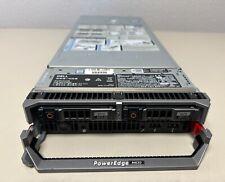
DELL M630 BLADE SERVER x2 XEON E5-2660V3 @ 2.6GH H730 PERC HDD CADDIES 16GB FC
$50.00
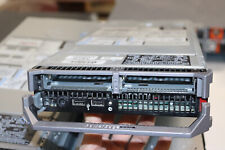
Dell PowerEdge M620 Blade Server
$39.99
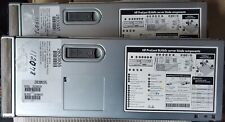
2 x HP ProLiant BL460c (447707-B21) Blade Servers No RAM No HDD
$30.00
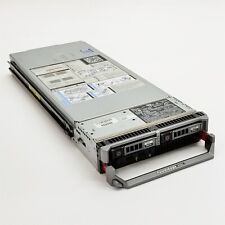
Dell PowerEdge M620 0F9HJC Blade Server 2*E5-2670 2.60GHz 192GB RAM 2*300GB SAS
$103.99
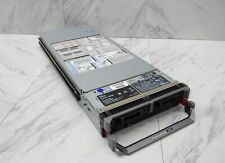
Dell PowerEdge M630 Blade Server 1x Xeon E5-2630 v4 CPU / Motherboard P/N 0R10KG
$69.99
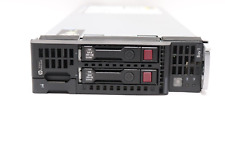
HP BL460c 2SFF GEN9 Blade Server 2x 12 Core Xeon E5-2670 v3 256GB RAM 600GB HDD
$199.99

Dell PowerEdge M620 Blade Server 2x E5-2670 2.6Ghz 16-Cores 256gb 2x 146gb 15k
$244.99

UCSB-B200-M4 UCS Blade Server, 2x E5-2667 V3, 256GB RAM DDR4, 2x 300GB Drives
$299.99



 Reply With Quote
Reply With Quote









